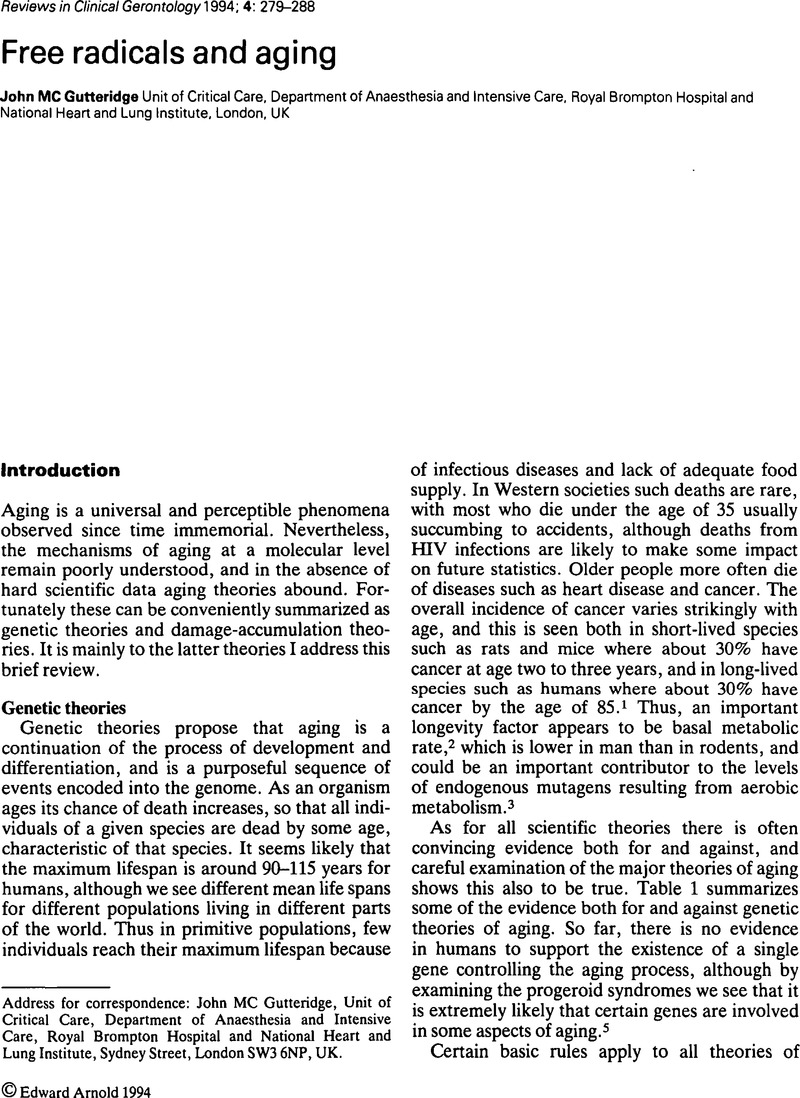Crossref Citations
This article has been cited by the following publications. This list is generated based on data provided by Crossref.
Lithgow, Gordon J
1996.
Temperature, stress response and aging.
Reviews in Clinical Gerontology,
Vol. 6,
Issue. 2,
p.
119.
Mendoza-Nuñez, Vı́ctor Manuel
Retana-Ugalde, Raquel
Sánchez-Rodrı́guez, Martha A.
and
Altamirano-Lozano, Mario A.
1999.
DNA damage in lymphocytes of elderly patients in relation with total antioxidant levels.
Mechanisms of Ageing and Development,
Vol. 108,
Issue. 1,
p.
9.
Apak, Reşat
Güçlü, Kubilay
Demirata, Birsen
Özyürek, Mustafa
Çelik, Saliha Esin
Bektaşoğlu, Burcu
Berker, K. Işıl
and
Özyurt, Dilek
2007.
Comparative Evaluation of Various Total Antioxidant Capacity Assays Applied to Phenolic Compounds with the CUPRAC Assay.
Molecules,
Vol. 12,
Issue. 7,
p.
1496.
Fernandes, Andréia da Silva
Mazzei, José Luiz
de Alencar, Alexandre Santos
Evangelista, Heitor
and
Felzenszwalb, Israel
2011.
Effects ofSanionia uncinataextracts in protecting against and inducing DNA cleavage by reactive oxygen species.
Redox Report,
Vol. 16,
Issue. 5,
p.
201.
2012.
Chemistry of Food Additives and Preservatives.
p.
1.
Apak, Reşat
Gorinstein, Shela
Böhm, Volker
Schaich, Karen M.
Özyürek, Mustafa
and
Güçlü, Kubilay
2013.
Methods of measurement and evaluation of natural antioxidant
capacity/activity (IUPAC Technical Report).
Pure and Applied Chemistry,
Vol. 85,
Issue. 5,
p.
957.
Plattner, Sabine
Erb, Robert
Chervet, Jean-Pierre
and
Oberacher, Herbert
2014.
Studying the reducing potencies of antioxidants with the electrochemistry inherently present in electrospray ionization-mass spectrometry.
Analytical and Bioanalytical Chemistry,
Vol. 406,
Issue. 1,
p.
213.
La Russa, Daniele
Marrone, Alessandro
Mandalà, Maurizio
Macirella, Rachele
and
Pellegrino, Daniela
2020.
Antioxidant/Anti-Inflammatory Effects of Caloric Restriction in an Aged and Obese Rat Model: The Role of Adiponectin.
Biomedicines,
Vol. 8,
Issue. 12,
p.
532.
Skendi, Adriana
2021.
Trends in Wheat and Bread Making.
p.
311.
Stolarczyk, Elżbieta U.
Strzempek, Weronika
Łaszcz, Marta
Leś, Andrzej
Menaszek, Elżbieta
and
Stolarczyk, Krzysztof
2022.
Thiogenistein—Antioxidant Chemistry, Antitumor Activity, and Structure Elucidation of New Oxidation Products.
International Journal of Molecular Sciences,
Vol. 23,
Issue. 14,
p.
7816.





